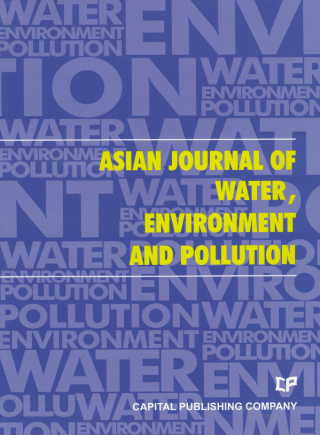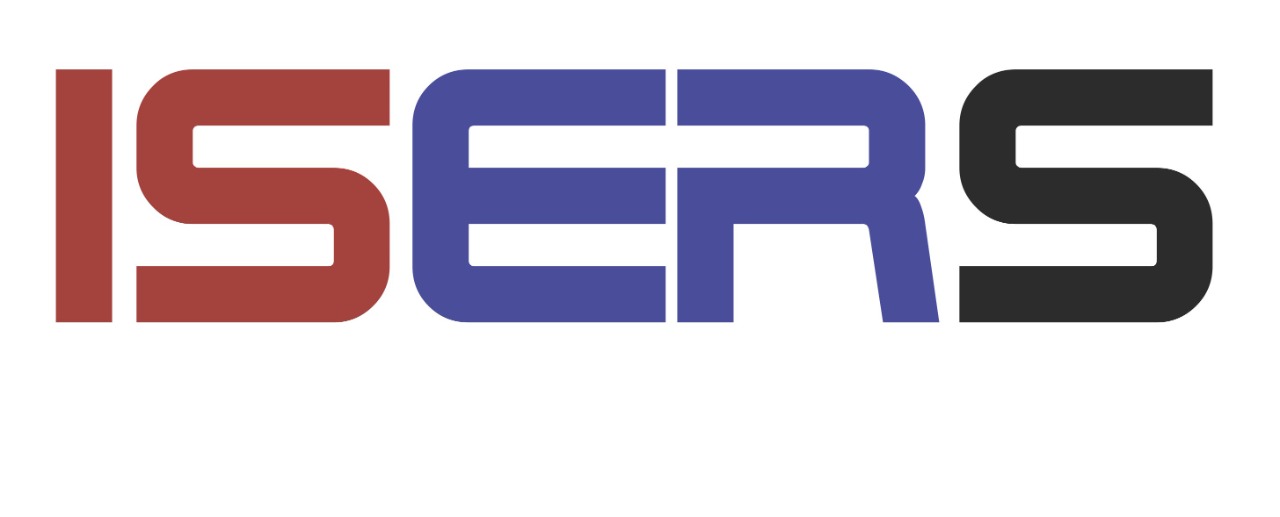Journals & Publications

Asian Journal of Water, Environment and Pollution
ISSN: 0972-9860
Indexed In : Scopus, CAB Abstracts, Chemical Abstracts Service (CAS), CSA Illumina Ecolex, EVISA - European Virtual Institute for Speciation Analysis, SciVerse, Ulrich's Periodicals Directory
![]() Asia, as a whole region, faces severe stress on water availability, primarily due to high population density. Many regions of the continent face severe problems of water pollution on local as well as regional scale and these have to be tackled with a pan-Asian approach. However, the available literature on the subject is generally based on research done in Europe and North America. Therefore, there is an urgent and strong need for an Asian journal with its focus on the region and wherein the region-specific problems are addressed in an intelligent manner.
Asia, as a whole region, faces severe stress on water availability, primarily due to high population density. Many regions of the continent face severe problems of water pollution on local as well as regional scale and these have to be tackled with a pan-Asian approach. However, the available literature on the subject is generally based on research done in Europe and North America. Therefore, there is an urgent and strong need for an Asian journal with its focus on the region and wherein the region-specific problems are addressed in an intelligent manner.
![]() In Asia, besides water, there are several other issues related to environment, such as; global warming and its impact; intense land/use and shifting pattern of agriculture; issues related to fertilizer applications and pesticide residues in soil and water; and solid and liquid waste management particularly in industrial and urban areas. Asia is also a region with intense mining activities whereby serious environmental problems related to land/use, loss of top soil, water pollution and acid mine drainage are faced by various communities.
In Asia, besides water, there are several other issues related to environment, such as; global warming and its impact; intense land/use and shifting pattern of agriculture; issues related to fertilizer applications and pesticide residues in soil and water; and solid and liquid waste management particularly in industrial and urban areas. Asia is also a region with intense mining activities whereby serious environmental problems related to land/use, loss of top soil, water pollution and acid mine drainage are faced by various communities.
![]() Essentially, Asians are confronted with environmental problems on many fronts. Many pressing issues in the region interlink various aspects of environmental problems faced by population in this densely habited region in the world. Pollution is one such serious issue for many countries since there are many transnational water bodies that spread the pollutants across the entire region. Water, environment and pollution together constitute a three axial problem that all concerned people in the region would like to focus on.
Essentially, Asians are confronted with environmental problems on many fronts. Many pressing issues in the region interlink various aspects of environmental problems faced by population in this densely habited region in the world. Pollution is one such serious issue for many countries since there are many transnational water bodies that spread the pollutants across the entire region. Water, environment and pollution together constitute a three axial problem that all concerned people in the region would like to focus on.
Water, Energy & Fuels,
Environmental Sciences,
Environmental & Energy Sciences
![]() Plagiarism should be below 15%.
Plagiarism should be below 15%.
![]() Submission deadline: March 25, 2022
Submission deadline: March 25, 2022
![]() After submission, it will take 45 - 60 days for Review process and after acceptance it will take 30-45 days for Publication
After submission, it will take 45 - 60 days for Review process and after acceptance it will take 30-45 days for Publication
![]() Organization of the paper and style of presentation
Organization of the paper and style of presentation
![]() Manuscripts must be written in English. Authors whose native language is not English are advised to seek the advice of a native English speaker, before submitting their manuscripts.
Manuscripts must be written in English. Authors whose native language is not English are advised to seek the advice of a native English speaker, before submitting their manuscripts.
![]() You can also visit Peerwith. Peerwith offers a language and copyediting service to all scientists who want to publish their manuscript in scientific peer-reviewed periodicals and books.
You can also visit Peerwith. Peerwith offers a language and copyediting service to all scientists who want to publish their manuscript in scientific peer-reviewed periodicals and books.
![]() Manuscripts should be prepared with wide margins and double spacing throughout, including the abstract, footnotes and references. Every page of the manuscript, including the title page, references, tables, etc., should be numbered. However, in the text no reference should be made to page numbers; if necessary, one may refer to sections. Try to avoid the excessive use of italics and bold face.
Manuscripts should be prepared with wide margins and double spacing throughout, including the abstract, footnotes and references. Every page of the manuscript, including the title page, references, tables, etc., should be numbered. However, in the text no reference should be made to page numbers; if necessary, one may refer to sections. Try to avoid the excessive use of italics and bold face.
Manuscripts should be organized in the following order:
- Body of text (divided by subheadings)
- Acknowledgements
- References
- Tables
- Figure captions
- Figures
- Headings and subheadings should be numbered and typed on a separate line, without indentation.
- SI units should be used, i.e., the units based on the metre, kilogramme, second, etc.
- The title page should provide the following information:
- Title (should be clear, descriptive and not too long)
- Name(s) of author(s); please indicate who is the corresponding author
- Full affiliation(s)
- Present address of author(s), if different from affiliation
- Complete address of corresponding author, including tel. no., fax no. and e-mail address
- Abstract; should be clear, descriptive, self-explanatory and not longer than 200 words, it should also be suitable for publication in abstracting services
Tables
- Number as Table 1, Table 2 etc, and refer to all of them in the text.
- Each table should be provided on a separate page of the manuscript. Tables should not be included in the text.
- Each table should have a brief and self-explanatory title.
- Column headings should be brief, but sufficiently explanatory. Standard abbreviations of units of measurement should be added between parentheses.
- Vertical lines should not be used to separate columns. Leave some extra space between the columns instead.
- Any explanations essential to the understanding of the table should be given in footnotes at the bottom of the table.
![]() For citations in the text, international standards must be followed at all points of references i.e. names(s) of author(s), year of publication, title, publisher, volume no. and must be checked thoroughly. For example:
For citations in the text, international standards must be followed at all points of references i.e. names(s) of author(s), year of publication, title, publisher, volume no. and must be checked thoroughly. For example:
![]() (a) Madhavan, N. and V. Subramanian (2001). Fluoride concentration in river waters in South Asia. Current Science, 80:1312-1319.
(a) Madhavan, N. and V. Subramanian (2001). Fluoride concentration in river waters in South Asia. Current Science, 80:1312-1319.
![]() (b) Silva, E.I.L. (1999). Status of water quality in Sri Lanka. In: Recent trends in Environmental Biogeochemistry. V. Ittekot and V. Subramanian (eds.), SCOPE publicaction, Hamburg University, Hamnburg, Germany, 240 p.
(b) Silva, E.I.L. (1999). Status of water quality in Sri Lanka. In: Recent trends in Environmental Biogeochemistry. V. Ittekot and V. Subramanian (eds.), SCOPE publicaction, Hamburg University, Hamnburg, Germany, 240 p.

